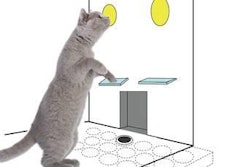Increasing humanization of pets around the world -- even in China, a small (but rapidly growing) pet market, 90% of pet owners say their pets are part of the family, according to Mars Petcare China -- means rising numbers of pet owners who want and expect to feed their pets products similar to the types of food products they're seeking for themselves. When it comes to protein sources in petfoods, that translates into "human grade" meats, poultry or fish and shunning of any ingredients perceived as lesser quality, such as meat or poultry by-products or meals.
Petfood manufacturers have understandably responded to these consumer demands. So everyone should be happy, right?
Except that by formulating and marketing products with label claims such as "high protein," "fresh meat" and "no by-products," the petfood industry has backed itself into a corner. It's confused consumers about their pets' nutrition needs and trained them to believe that perfectly healthy and nutritious ingredients (organ meats, by-products) are bad and "human grade" is the only way to go -- if not that actual label term, then at least the idea that the ingredients in a petfood should be the same or very similar to those in a human food product.
The real problem is that this situation is not sustainable, neither from a market standpoint nor especially in terms of ingredient sources and supplies. Our industry is competing directly with the human food industry for many of these protein sources, and the demand on the human side is increasing exponentially. According to the United Nations Food and Agriculture Organization (FAO), global consumption of meat and dairy products will rise by 102% and 82%, respectively, between 2000 and 2050 (as quoted in a 2012 report from the Ridget Institute in New Zealand). This will happen concurrently with the world's population swelling to 9 billion by 2050 and developing countries and regions continuing to increase their consumption of meat as per capita incomes rise. (The fact that meat consumption in developed markets is steady or even growing slightly doesn't help.)
With so many human mouths to feed, and so many of those humans seeking more meat, finding alternative protein sources is a must. That is doubly true for petfood, which will continue to see its sources and supplies of protein-based ingredients shrink.
Thus, it's interesting to see some of the ideas for alternatives coming to light. A lively discussion on the Petfood Industry Community Group on LinkedIn, for example, broached the concept of edible insects as a protein source for petfood. This was seconded by an article in the September issue of Pets International magazine, which says FAO is "encouraging the large-scale raising of insects" and gives pros and cons for their use in petfood. Benefits include a new protein source that could be non-allergenic to dogs and cats, plus the fact that insect protein is already used in foods for birds, fish and reptiles (of course, the natural diets of those animals include insects). Lack of regulation, research on nutritional value and methods for large-scale "farming" of insects comprise potential obstacles to their use as petfood ingredients.
One of the people commenting on the LinkedIn discussion provided a link to an article by Trevor Baker of TheGuardian.com, which focuses on the fact that, while 2 billion people around the world regularly eat insects, one of the main challenges to widespread use of insects as food -- especially in developed markets -- is getting past the "ick" factor; in other words, many people remain squeamish about eating bugs. (Count me in that category.) In most cases, companies promoting insect-based food products in developed markets are going for novelty, not nutrition.
With pets being humanized and considered part of the family, I imagine that squeamishness could affect the possibilities for using insects as protein sources for petfood. On the other hand, nearly every cat owner has seen their precious Fluffy bat down a fly from the air and munch on it -- and we all know most dogs will eat anything! So, if the production and regulation issues can be resolved, perhaps insect protein would be viable for our industry. What do you think?
Google+















